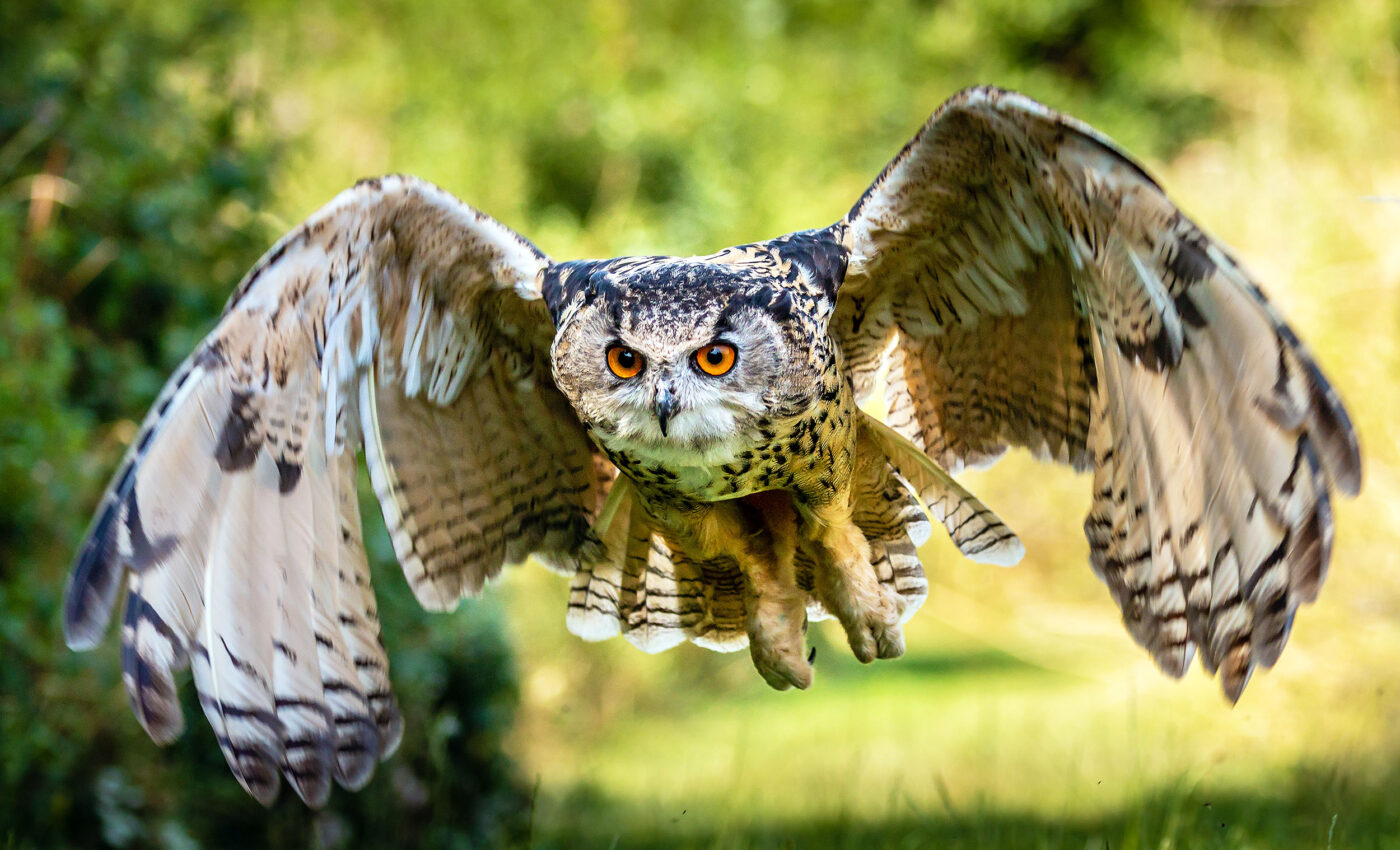
The silent flight of owls is one of nature’s great mysteries
Owls, known for their silent flight through tranquil environments, owe this remarkable trait to their wings, which produce minimal noise, allowing them to stealthily locate prey. This intriguing characteristic has captured the attention of researchers for years.
Recent studies have linked silent flight to micro-fringes found in owl wings. These trailing-edge (TE) fringes are key in reducing noise from air movement caused by wing flapping.
Understanding these fringes better could pave the way for quieter fluid machinery. However, the specifics of how these fringes interact with other wing features in actual owl wings remained a mystery.
Studying the silent flight of owls
Aiming to demystify the silent flight of owls, Professor Hao Liu and his team, including Dr. Jaixin Rong from Chiba University’s Graduate School of Engineering and Dr. Yajun Jiang and Dr. Masashi Murakami from the Graduate School of Science, explored the influence of TE fringes on owl wings’ sound and aerodynamics.
Prof. Liu explained the motivation for their research, stating, “Despite many efforts by many researchers, exactly how owls achieve silent flight is still an open question. Understanding the precise role of TE fringes in their silent flight will enable us to apply them in developing practical low-noise fluid machinery.”
The team created two detailed three-dimensional models of a real owl wing, one with TE fringes and the other without, to conduct their study.
They performed fluid flow simulations using these models, combining large eddy simulations and the Ffowcs-Williams-Hawkings analogy, at the speed of a gliding owl’s approach.
Findings and implications
Their findings were revealing. The TE fringes significantly reduced noise levels in owl wings, especially at steep angles of attack, without compromising aerodynamic performance.
The team discovered two key ways TE fringes affect airflow. First, they disrupt the trailing edge vortices, thereby reducing interactions between feathers at the wingtips.
This mechanism, in turn, diminishes the shedding of wingtip vortices. These systems work together to improve both aerodynamic force and noise reduction in owls.
Prof. Liu highlighted the importance of their findings, explaining, “Our findings demonstrate the effect of complex interactions between the TE fringes and the various wing features, highlighting the validity of using these fringes for reducing noise in practical applications such as drones, wind turbines, propellers and even flying cars.”
In summary, this study not only deepens our understanding of owls’ silent flight but also opens up new avenues for biomimetic designs in creating quieter fluid machinery.
More about owls and silent flight
As discussed above, owls are mysterious and captivating birds of prey, dominating the night sky with their remarkable abilities and unique characteristics.
These nocturnal creatures have fascinated humans for centuries, not only because of their haunting hoots and striking appearance but also due to their incredible hunting skills and adaptability across various habitats.
Exceptional hunters with silent flight
Owls stand out as exceptional hunters. Their ability to fly almost silently gives them a significant advantage over their prey.
The specialized design of their feathers allows air to pass through without creating noise, enabling them to swoop down on unsuspecting prey.
This silent flight, coupled with their sharp talons and beaks, makes owls formidable predators.
Superior vision and hearing
Owls possess extraordinary night vision, allowing them to see prey in low light conditions. Their large, forward-facing eyes provide a wide field of vision and depth perception, crucial for pinpointing prey from a distance.
Moreover, owls have a highly developed sense of hearing, with ears that are not symmetrical. This asymmetry lets them accurately locate sounds in different planes, an essential skill for hunting in the dark.
Diverse owl species and flight adaptations
There are over 200 species of owls, each adapted to its environment. From the tiny Elf Owl, which nests in cacti in the desert, to the imposing Snowy Owl, which thrives in the Arctic tundra, these birds have developed unique adaptations to survive in various ecosystems.
Owls can camouflage themselves against tree bark or snow, making them nearly invisible to both prey and predators.
Significance in ecosystems
Owls play a crucial role in maintaining the balance of ecosystems. As predators, they control the population of rodents and other small animals, preventing overpopulation and the spread of disease.
Their presence indicates a healthy environment, making them vital indicators of ecological health.
Cultural impact of owls
Throughout history, owls have held a place in mythology and folklore. Seen as symbols of wisdom in some cultures and omens of death in others, they have always stirred human imagination and curiosity.
In summary, owls, with their silent wings, remarkable hunting abilities, and diverse adaptations, continue to captivate and intrigue us.
As we learn more about these magnificent birds, we gain a deeper appreciation for their role in nature and our shared environment.
The full study was published in the journal Bioinspiration & Biomimetics.
—–
Like what you read? Subscribe to our newsletter for engaging articles, exclusive content, and the latest updates.
—–
Check us out on EarthSnap, a free app brought to you by Eric Ralls and Earth.com.
—–













